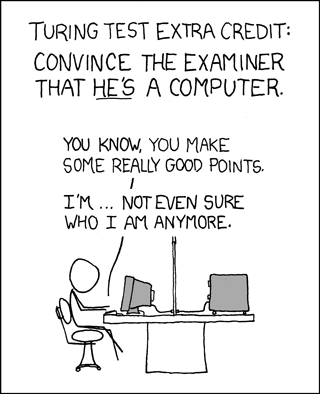Modern-day debates tend to be incredibly frustrating.
If you listen to the language used to assess any debate, you’ll find that there’s always an element of “winning”. The aim, to most people, is thus to have an argument that is better than the opponent’s. Failing which, you present one that sounds better than your opponent’s.
The incentive to come out ahead in a zero-sum game causes a lot of us to commit logical fallacies, whether intentional or not. The most common example of this is the straw man, where one side creates a caricature of the other side’s argument and engages with that. They undermine the opposition by attacking the weakest part of the argument.
That’s what happens when the sole purpose is to win. But if you’re interested in more than winning, and want to convince, there’s a better way.
Introducing The Steel Man
Instead of substituting what someone else is saying with a lousy proposition, we’ll do better by reinforcing their basic argument.
This is known as the Steel Man Technique. Put simply, it’s building the best form of the other side’s argument and then engaging with it. It’s being charitable and patching up the weaknesses in the other side’s proposition so that he can bring the best counter-argument to your point of view.
It’s a simple idea, but incredibly difficult in practice. Most of the time we’re interested in being the winner rather than being correct. What reason is there to build a steel man for the other party then?
First, you’ll have a better chance of persuading the other party. People want to have their thoughts taken seriously and not brushed aside. The best way to do this is to show that you understand the thrust of their arguments by improving on the way the core idea is expressed. Anything less and you’ll merely be attacking a weak manifestation of an idea, and not the idea itself.
Second, and more importantly, you need to constantly test our assumptions and beliefs in order to build a better mental model of the world. If you can’t respond to the strongest argument from the other side, there’s a good chance you’re wrong. That’s okay, as long as you’re willing to adjust to the evidence and change your worldview.
Otherwise, you’ll be little different from someone who thinks that the sun revolves around the Earth.
How To Listen (Or The Ideological Turing Test)
The steel man technique isn’t perfect.
One problem is that the best form of the argument often doesn’t make sense to the other person. This doesn’t mean he’s stupid. An argument can make more or less sense to a person depending on his worldviews, values, and the premises that he works with.
What this means is that we need to listen and understand where others are coming from. The best way to do this is what Bryan Caplan calls the Ideological Turing Test.
In a Turing test, a computer tries to pass off as a human:
A human judge engages in a natural language conversation with one human and one machine, each emulating human responses. All participants are separated from one another. If the judge cannot reliably tell the machine from the human, the machine is said to have passed the test.
The Ideological Turing test is similar. If you can state opposing views as clearly and persuasive as your opponents, you pass. You’re as good an emissary of that idea as anyone.
That’s the standard we should be striving for. As John Stuart Mill said, “he who knows only his own side of the case knows little of that.”
We certainly can do better.
